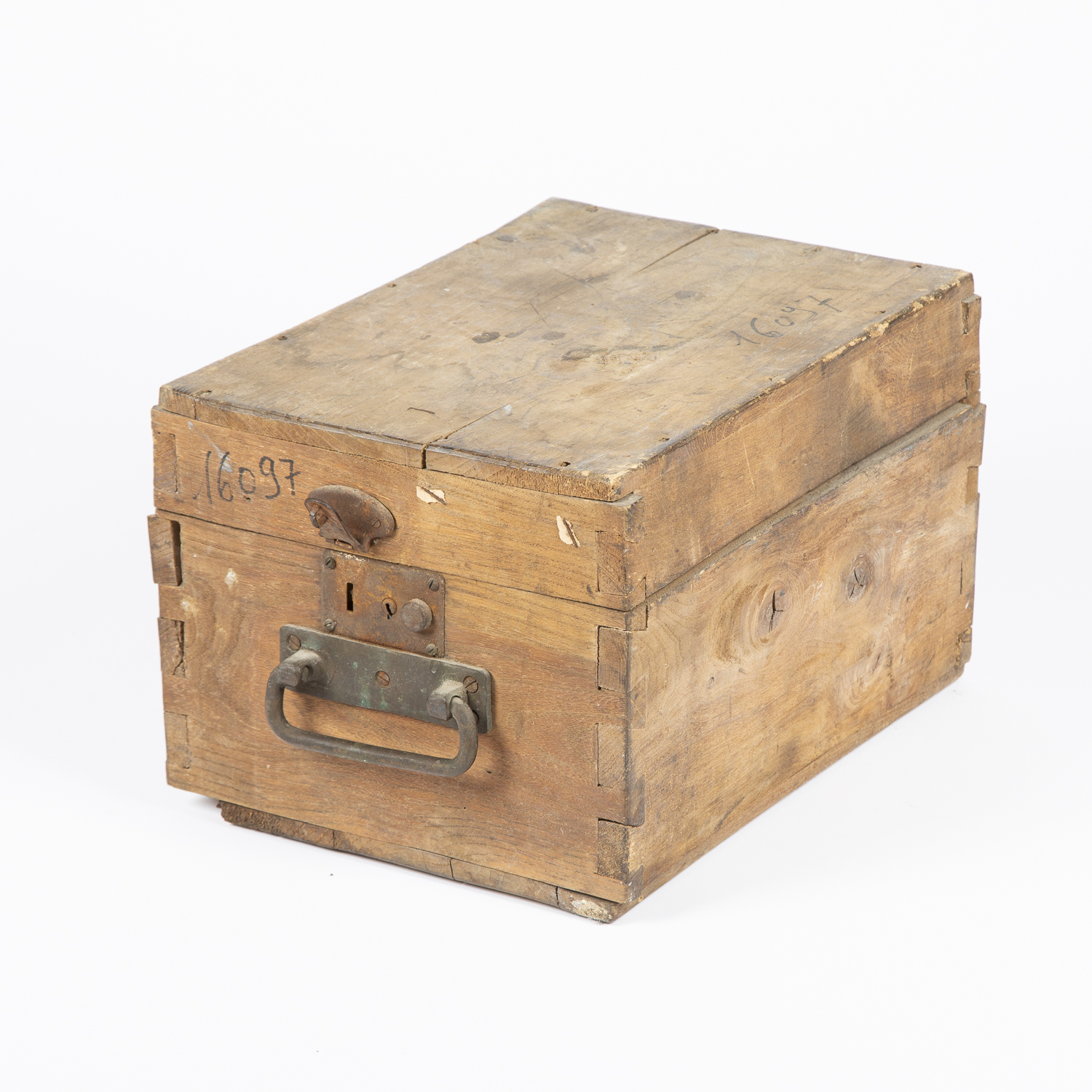
In 1908 they became a limited partnership Huet et Cie Constructeurs, and in 1912 became a limited company (societé anonyme) under the name “Old Establishments Huet & Co”.

In 1892, Henri Luis Huet took over the firm of Clermont which had been founded in 1854, and became an official supplier of optics to the French War and Naval Ministries. They are equipped with a telemetric device, a flippable calcite lens in the right eyepiece, operated by a knurled knob in the ocular, which when trained on a man on foot or horse, is used in conjunction with the brass reference plates mounted on the barrels with a “poilu” (infantryman) on one and a mounted dragoon on the other, giving them a quaint 19th Century look, to calculate the range to the subject this system, pre-dating rangefinder graticules, had been in use with French military Galilean binoculars and telescopes since the middle of the 19th Century.

Introduced in 1903, this model continued to be produced throughout WW1 some, like this pair, being sold to the British War Office to help make up an acute shortfall in optical equipment for the rapidly expanding British Army in the early part of the war. If the case is original to the binoculars, they would date from c.1913 to c.1915. Mechanically they are in good condition there is some chipping to the bakelite eyepieces. They use a linear focussing system, first patented by Goerz, whereby a sleeve moves up and down, not helically, meaning the eyepieces remain stationary.Īround the knurled ring to fix the interpupillary distance is the number 21830, possibly the manufacturer’s serial number. On this pair, both bottom prism housings have thick splodges of a black paint, presumably masking British Government broad arrows. On the bottom right prism housing is “IC.MG 2084”, (Infantry/Cavalry (?) Ministry of War) and an asterisk. On the bottom prism housings are two studs enabling the binoculars to be stood upright. On the top left prism housing is “Extra Lumineuse” (Extra Brightness) and 7x. SGO (see below) produced binoculars marked simply “Huet”. S1 is a British WW1 War Ministry grading for purchased binoculars, indicating top grade prismatic binoculars, with a serial number. They are inscribed on the top right prism housing “S1 79311” and ““Huet” Paris”.

1913-15, 3 of 5Ī pair of binoculars from the renowned French firm of Huet, Paris.


 0 kommentar(er)
0 kommentar(er)
